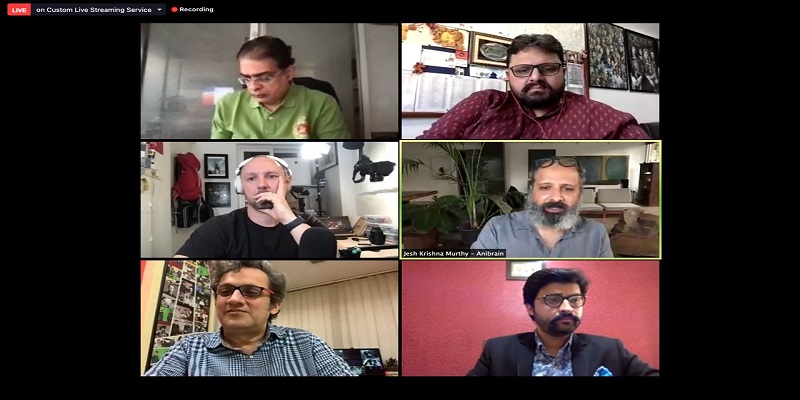
The virtual VFX and More (VAM) Summit organised by Animation Xpress India, saw the industry makers talking about the Education Gap in the Indian VFX industry. Present on the panel were ABAI AVGC Centre of Excellence Secretary B S Srinivas, Whistling Woods International VP & CTO Chaitanya Chinchalkar, Anibrain founder and CEO Jesh Krishna Murthy, Makuta VFX division head and chief technical director Pete Draper, Aptech chief marketing officer and executive vice president Pravir Arora. The session was moderated by Climb Media founder and director Kireet Khurana.
The panel discussed about the change in the education system over the years in the AVGC industry, and how it is different from the international system. Talking about the evolution, Srinivas said, “Seeing the industry for the past 22 years, we have seen it grow. From ABAI we aim to provide excellence in animation and VFX to students and take them through specialised programs and also provide internship opportunities.”
On asked about the comparison between the Indian art students and the international talent, he further expressed, “India is known for its art. We all have grown up looking at the Indian art. What we need here is the right kind of knowledge and training.”
The Centre of Excellence has all the facilities and hi-end technologies available for the upcoming industry talents. This ecosystem created in Bengaluru has studios and students coming in, who get exposure to this technology.
Another panelist, Chinchlikar had a difference of opinion. He thinks that tools are useful only till a certain extent. What matters is how the student or professional applies those. “VFX students at Whistling Woods International actually shoot videos, record sounds, which helps them know what VFX artist needs to be. They play many roles. Having them exposed to film makers, VFX artists is a basic thing, but the teaching methodology is what makes them learn the subject.
Draper who has been working in the Indian industry since a few years found it tough initially to get people with a passion or drive in the VFX sector. He shared few experiences where individuals lacked the self-development quality. He is glad now that he can see the industry changing and growing.
“The artists with the ability to utilise the knowledge and use the resources which are currently available, and develop themselves, are the ones who go to places in the industry, as they have passion for the art,” said Draper.
Murthy found it amazing how India made work from home possible in a real productive way. “The incredible thing that came out from the pandemic is things were done using various possibilities and work was managed properly,” he said.
He was also of the opinion that software only does the technical part. But it’s the creative people who make the project a success. “One should just encourage the artist from time to time,” said he.
The panelists together thought that the artists need to be pulled out of their shell and made to express. The inability to nurture talent in the education system is one big gap, we can say.
Arora, who is part of the biggest educational franchise believes that their competition is unemployment. “All we target is to build the skill in any person to avoid that unemployment.” But the enrollment happens only after understanding the student’s passion for the subject. “As long as the person has the passion, he/she is on board. Only financially strong people without the drive to learn are not what we look for,” Arora expressed.
The educational gap, though not very strong can still play a major drawback for the industry. With international artists now venturing into Indian projects and being a part of this ecosystem, we can hope for a positive transition, this industry will see in the times to come.

